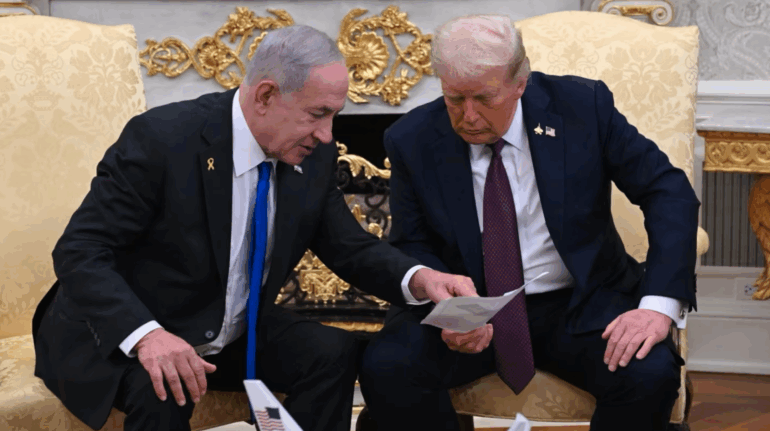On October 13, 2025, a significant peace agreement was reached in Gaza, marking a pivotal moment in the Israeli-Palestinian conflict. To understand how this deal was achieved, Amna Nawaz interviewed two experienced negotiators: Dennis Ross, who served in Middle East peace roles under both Democratic and Republican administrations, and Rob Malley, a former National Security Council official under the Clinton, Obama, and Biden administrations. Their insights reveal the unique strategies and circumstances that led to this breakthrough.
A Bold Approach to Diplomacy
Rob Malley highlighted the unconventional tactics used by President Trump to secure the peace deal. Unlike his predecessors, Trump employed a strategy of “raw power,” breaking from traditional diplomatic norms. He directly engaged with Hamas, a group previous administrations avoided to prevent legitimizing them or undermining the Palestinian Authority. Trump also applied pressure on Israel while offering guarantees to both sides, creating a dynamic where neither could easily refuse him. Malley noted that the peace plan, though flawed—demanding Palestinian atonement for the October 7 massacre without addressing Israel’s actions or occupation—still marked a major achievement due to Trump’s willingness to take bold risks.
Dennis Ross echoed Malley’s perspective, emphasizing Trump’s use of leverage through incentives and consequences. He explained that Trump positioned himself so that Israeli Prime Minister Benjamin Netanyahu could not say no, leveraging relationships with Arab nations like Egypt, Qatar, and Turkey. These countries, motivated by potential gains and losses under Trump’s influence, played a key role in pressuring Hamas and supporting the deal. Ross contrasted this with the Biden administration, which struggled to exert similar influence over Netanyahu, partly because of domestic political dynamics involving Republican support for Israel.
Favorable Conditions and Missed Opportunities
Both negotiators agreed that the circumstances in 2025 were more conducive to a deal. Israel had already achieved significant military objectives, including degrading Hamas, eliminating Hezbollah leaders in Lebanon, and conducting joint U.S. strikes against Iran. These developments weakened the regional proxy network, creating a ripe moment for negotiations. However, Malley pointed out that the Biden administration had significant leverage—such as political popularity in Israel post-October 7 and control over U.S. weapons supplies—but failed to use it effectively. For instance, continuing to provide weapons to Israel while advocating for a ceasefire was inconsistent and weakened Biden’s position.
Ross added that Trump’s team, including figures like Steve Witkoff and Jared Kushner, took a direct approach by meeting with Hamas and rallying regional allies like Turkey’s President Erdogan, Qatar, and Egypt. These countries saw value in aligning with Trump, understanding both the benefits of cooperation and the risks of defiance. This contrasted with Biden’s more cautious approach, which avoided direct engagement with Hamas and hesitated to take tough stances, such as withholding weapons or pushing for strong votes at the U.N. Security Council.
Challenges and Future Outlook
While the peace deal is a significant step, both negotiators cautioned that it is not a complete resolution. Malley described it as moving Gaza from “utter hell to a mere nightmare,” a stark but realistic assessment. The agreement includes the release of hostages and detainees and aims to restore humanitarian aid, bringing relief to Gazans. However, he warned that broader Israeli-Palestinian peace remains distant, requiring continued unconventional diplomacy that defies political norms.
Ross emphasized the importance of ongoing involvement from Trump and his team to ensure the ceasefire holds. The deal’s 20 points are interpreted differently by the parties, particularly regarding demilitarization and Israeli withdrawal. How these terms are defined and implemented will be critical. Ross stressed that clarity on who oversees demilitarization and how withdrawal is executed will determine the agreement’s success in the coming weeks.
A Step Forward, But Not the End
The Gaza peace deal represents a rare moment of progress in a decades-long conflict, driven by bold diplomacy and favorable conditions. However, as Ross and Malley underscored, its success hinges on sustained effort and careful management of ambiguities. For now, the deal offers hope—reuniting families, restoring aid, and pausing violence—but the path to lasting peace remains complex and uncertain.
